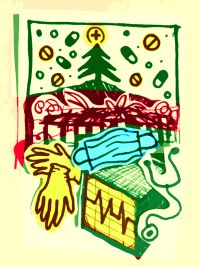
Despite everything have a great Christmas!
Introduction
What a year it has been! Who could have imagined back in January that an outbreak of a virus infection in China would close down much of the world? The challenge to SUES was daunting. Just when we thought we had got the Society on its feet again with successful courses and an encouraging increase in membership, it seemed that all would be snatched away. I think we can say that it hasn’t. We have maintained this Forum as a service to members and have launched a course, using the technology of Zoom to allow members to meet. Our ambitions have grown, as you will see from the programme announced below.
This Christmas bumper edition is a little different from what we planned. However, we hope that it is sufficiently seasonal and entertaining. First we have a topical if mischievous piece from a modern Aesop. (Now who could that be?) Then Alan Potter considers Christmas from a scientific angle, providing some curious facts. Hazel Fort looks back on a Covid year with ‘hope in our heart’ and Roger Mitchell provides accounts of Christmas in different times.
We are currently updating the website and hope that it will provide useful information and further opportunities for learning.
Forthcoming Talk: The World of Lichens
Alan Potter (by Zoom) – Friday 15th January 2021, 2:30pm – 3:30pm
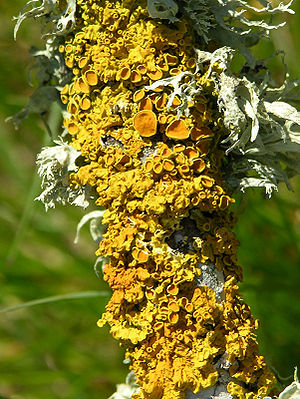
Despite being multitudinous, ubiquitous and multifarious, lichens go about their daily business almost unnoticed. The world of lichens is not one most people have spent time in but this talk hopes to provide enough information and insight to arouse curiosity. By explaining why lichens are ‘complex life forms’, their evolution and nature will be revealed and their place in the living world better understood. A wide range of illustrations and pictures will be used to support the science behind them and, it is hoped, to bring the world of lichens to life.
Programme for January – March 2021
We hope that by April 2021 it will be possible to arrange a programme of real meetings and courses, not to mention our delayed visit to Scarisbrick Hall. Until then, however, we hope to maintain your loyalty and involvement through a programme using Zoom, Email and Paper. There will be monthly editions of Forum (for which contributions will be gratefully received), two Friday afternoon talks and a four session Monday morning course. There will be no charges for any of the activities.
Friday afternoon talks
Friday 15th January at 2.30pm – The World of Lichens – Alan Potter
Friday 12th February at 2.30pm – Montesquieu: the first modern man? – John Sharp
We hope that there will be another talk in March. Details to follow. These talks will be on Zoom. If you have already given Alan Potter your email address, you will automatically receive an invitation. If you have not yet done so, but would like to attend, please send your email (contact details below). The format for these talks will be as similar as possible to the real thing – a 45 minute illustrated talk with the opportunity for questions afterwards.
Monday morning course
Our sessions this term on Samuel Pepys and Celia Fiennes went well and so Roger Mitchell will give four sessions on 18th and 19th Century Travellers.
Monday 25th January – ‘Commercial Travellers’ – Daniel Defoe and Daniel Paterson
Monday 8th February – ‘Gentlemen Travellers’ – John Byng, Viscount Torrington and another Englishmen, an American and a German
Monday 22nd February – ‘A Travel Revolution’ – Railways and Steamships
Monday 8th March – ‘Feisty Ladies’ – Women Travellers from Victorian England, especially Marianne North and Isabella Bird
As with the talks, the format will be similar to previous courses – a Powerpoint introduction, some readings from Journals and informal discussion. Each session will last for about an hour and you will be able just to watch and listen or take a more active role. Early in the New Year, Roger will send all members more information about exploring the topic of Travellers either through Zoom or by using Powerpoints and Documents that will be emailed or posted to you. You will be encouraged to try Zoom either just as a listener/viewer or as a direct participant. As long as Alan Potter has your email address, you will get an invitation.
We look forward to an active and enjoyable new year with the hope of resuming normal service as soon as possible.
A Fable for Our Time
How the turkeys came to vote for Christmas
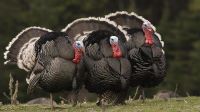
One day the animals got together and decided to have a vote on the merits of Christmas. A young turkey was reading through the document explaining all this when he was approached by a man in a butcher’s apron. The man carried a cleaver, which he quickly hid in the pocket of his apron. The strange thing about him was that his hair and skin had a golden sheen.
‘Hello, little turkey,’ he said , ‘I see you are trying to make up you mind whether to vote for or against Christmas.’
‘Yes,’ replied the turkey, ‘I’ve been told Christmas is a bad idea for turkeys, since many of them get killed.’
‘False information,’ said the butcher, ‘You’ve been listening to the chickens and geese, who are all communists. Christmas is a wonderful time for everybody, including turkeys.’
‘But why do people buy so many turkeys before Christmas? I’ve heard that they want to eat them.’
‘More false information. People only buy turkeys so they can take them home and give them to the children as pets. They have great fun playing with the children. And another thing, if there was no Christmas Jesus would be most upset, because he always used to have turkey for his Christmas di – to give to his disciples as pets.’
‘But I thought there weren’t any turkeys in the Holy Land in those days.’
‘Of course there were. How else would Jesus and his disciples celebrate Christmas? You’ll be telling me next that Jesus didn’t have guns.’
‘Did Jesus really have guns?’
‘He certainly did. There were many bad people in the Holy Land in those days and the disciples had to defend themselves. You’ve read that bit about ‘Blessed are the warmakers’.’
‘Well I don’t know.’
‘Listen. I promise you if you vote in favour of Christmas, it’ll make Turkeyland great again.’
So the little turkey voted for Christmas. As did all the other animals, except the pigs, but because they were pigs they weren’t allowed to vote.
And mmmm those turkeys tasted good.
Aesop ii
The Science of Christmas
The festive season, and the role of Santa Claus, is studded with tradition, mystery and wonder. When we take a light-hearted look at the science behind it, it seems even more magical, and more unbelievable, than ever. Enjoy!
1. Santa’s Present List
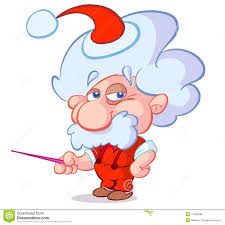
Santa has to start somewhere and that is making a list of the children to get a present and what they are getting. However, his list will be pretty long. It seems reasonable to assume that he’s typing it on a normal computer so there are 43 lines per A4 page. That means a list of, say, 600 million children’s names will run to almost 14 million pages. A sheet of good-quality paper is about half a millimetre thick, so 14 million pages would be 7 million millimetres, or 7 km tall. For comparison, Mount Everest is 8.9 km high.
2. Checking the List
It will take Santa quite a long time to check his list as well. The average adult reads 300 words per minute. If we assume Santa’s a bit better than average, because of practice and say, equivalent to the average university graduate’s 450 words per minute, then it would take him a bit more than 1,100 hours, or eight hours a day for about five months, to check the list. Of course, he’s got to do it twice, so that’s 10 months of the year spent on paperwork.
3. Wrapping the Presents
Once Santa knows what every child wants, on average each elf can wrap a present in 10 seconds. Working an eight-hour day, Santa will need 3,000 elves in the wrapping department to work for an entire year to get the job done. Each present will need, on average, 80 cm of wrapping paper, which contributes to over 1.5 million miles of wrapping paper used every year.
4. Rudolf the Red-Nosed Reindeer
Using video-imaging technology, scientists now understand how blood circulates in reindeers’ nasal passages and found that their blood vessels and circulation networks are 25% more densely packed than in other areas of the body making them appear redder on the surface. Meanwhile, scientists at the University of Brighton think Rudolph could also exhibit bioluminescence, or the ability to produce light through a chemical reaction, in the same way as some fireflies and deep sea creatures do.
5. Delivering Presents
It is now up to Santa and the reindeer to deliver the presents. Across the world, Santa will be delivering gifts to around 600 million children on Christmas Eve. That’s visiting over 2,000 homes every second to make sure every child gets a gift. With an average of 2.5 children per household, Santa will need to make 240 million stops on Christmas Eve. This leaves him roughly 0.0005 seconds to get in, leave presents, have a snack and get out.
6. Managing the Sleigh
Throughout this incredible journey, Santa needs to transport enough gifts for the 600 million children. If each present weighs about 1kg, that’s a cargo weight approaching 600,000 tonnes – the equivalent of about 82 Eiffel Towers. Those poor reindeer! Assuming that Santa and his elves make good quality presents and spend approximately £115 a time, that’s £69 billion, or about the annual gross domestic product of a country such as Slovakia.
7. A Busy Christmas Night
According to the NHS, the average 7-year-old needs about 10 hours’ sleep a night. So, if Santa travels west with the sun, Santa has 34 hours from when the first children go to sleep on Christmas Eve to when the last ones wake up on Christmas morning. Assuming he doesn’t have to stop and just launches the presents out of the sleigh, dividing a journey of around 17.5 million kilometres by 34 hours, we get a Santa sleigh speed of 515,000 km per hour. That is about 140 kilometres, or 87 miles, a second. He could orbit the Earth 12 times an hour. For comparison, an astronaut on the International Space Station, orbits the Earth 16 times a day at a stately 7.66 km (about 4.75 miles) per second.
8. Milk and Mince Pies
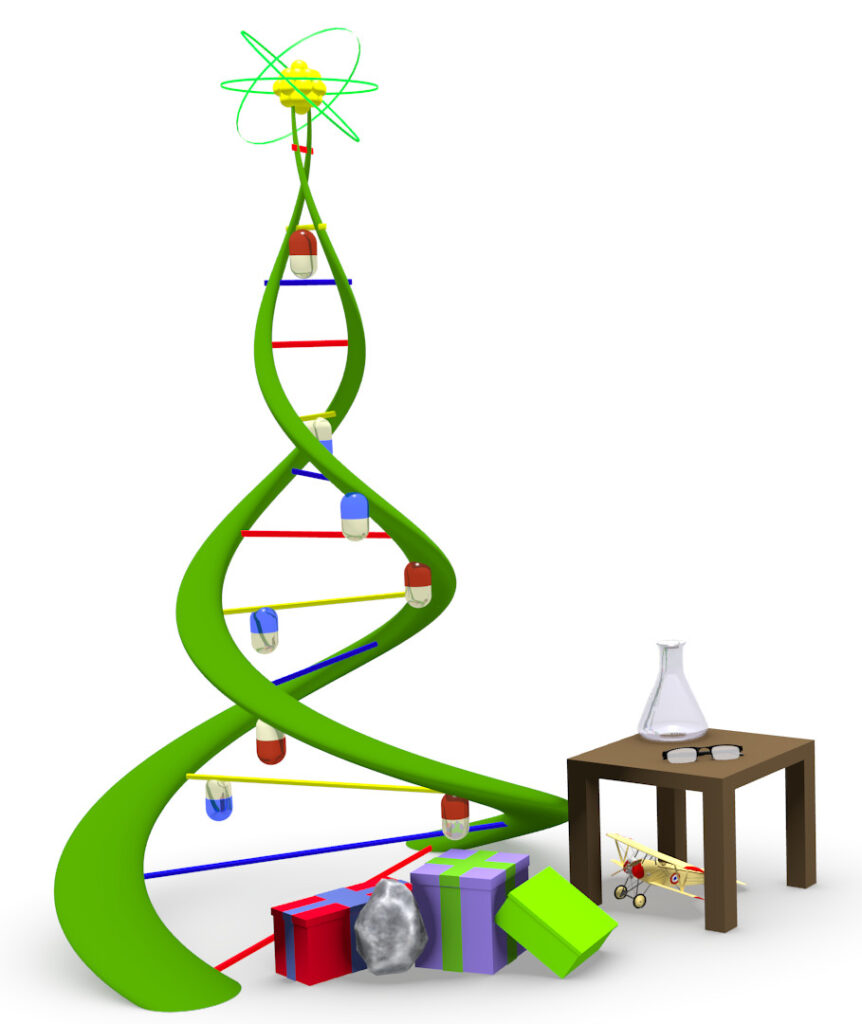
Now Santa is quite partial to the odd glass of milk and a mince pie as he travels around. If he drinks a 200 ml glass of milk and eats one mince pie at each home, he will consume almost 130 million litres of milk by the time he’s finished – enough to fill over 50 Olympic swimming pools. He will also have eaten nearly 40,000 metric tonnes worth of mince pies. A typical mince pie contains 218 kcal and 200 ml of milk has about 128 kcal. If you multiply that by 254 million, you get 87,884,000,000 kilocalories, or the recommended allowance for one adult man for a little over 96 thousand years.
9. Christmas Dinner
Once home, Santa will be ready for his Christmas dinner traditionally containing sprouts. However, if you object to Brussels sprouts on your Christmas dinner plate, you’re not alone. Brussels sprouts contain glucosinolate, which, when cooked, breaks down into chemicals called isothiocyanates. Research indicates that about 70% of the population experience a bitter taste from this chemical, while it goes unnoticed to the rest. At the same time, however, it is worth considering munching sprouts as they are packed with vitamins, folic acid, fibre and minerals. They also have more protein than most other vegetables and have even been linked to anti-cancer properties.
10. The Spirit of Christmas
Throughout Christmas day Santa will be feeling as happy as the rest of us and this is mainly due to the production of four primary chemicals that can drive the positive emotions we feel throughout the day: dopamine, oxytocin, serotonin, and endorphins (sometimes referred together as D.O.S.E.).
Dopamine causes that little happy feeling when someone gives you a gift or a compliment, for example. However, the effects of dopamine are fleeting. This isn’t the type of long-lasting happiness you’ll be able to savour. It will last just long enough to get you through to the next present to unwrap and enjoy.
Oxytocin, often referred to as the ‘hugging drug’, is released by the brain during physical contact with others and from love and friendship. Oxytocin boosts our immune systems and unlike dopamine’s instant gratification, oxytocin gives us lasting feelings of calm and safety. This can come from meeting family, sharing a meal with others or the giving of a gift.
Serotonin is produced when we feel a sense of accomplishment or recognition from others. This could be from being thanked for a present or being congratulated on winning a game. Eating some festive chocolate is always attractive as it contains the amino acid tryptophan. Tryptophan has a role in producing serotonin in our bodies leading to feelings of wellbeing. That’s why eating chocolate is intrinsically linked with a sense of enjoyment.
Endorphins are essentially released in response to pain but also help us push our bodies beyond their comfort levels and persist when we might otherwise want to give up. Endorphins can feel like a “high” or even just a nice relaxing feeling. It’s even been argued that the joyful feeling you get from deep belly laughs is caused by endorphins. The contracting of stomach muscles is enough “pain” to release a few feel-good endorphins into your body.
Hopefully, reading this ‘scientific’ look at the wonder of Christmas releases a few chemicals in the body, brings a smile and creates a little happiness too!
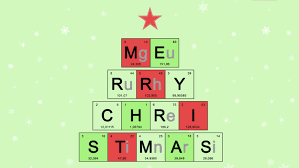
Alan Potter
Giraffe-Ter

What a strange world we now live in! Since March, we have had to adapt all aspects of our lives to the intransigencies of the new world we live in. At first, our only contact with our pupils was through Microsoft Teams and telephone calls to the most vulnerable of our students as they stayed at home. Just a handful of students attended school, those sons and daughters of the key workers, and they betrayed their worries in their body language. It was hard enough lightening their burdens, but we tried. I actually put together a joke book in those weeks, taken from the students themselves. It will be used in a newsletter the students are compiling for the residential and nursing homes in Bootle.
We had nothing to compare these times to. Slowly, our students trickled back: those Year Ten students who were (surprisingly!) anxious about the amount of exam content they were missing looked at us wistfully, willing us to make ‘the virus’ go away.
Fast forward to September. Politicians promised that all schools would return. They did. Pandemics are not unknown. Indeed, St. John Bosco lived through one. He did not have technology to fall back on. It was as if God had gone away. Prayer was like searching a jungle in yearning for that comforting presence. So, with all teaching continuing on Teams, what was missing?
Our students that’s what.
Their presence; their humour, their shared joys and woes.
Their sharing.
Schools are not just buildings, they are students and teachers and teachers’ aides, secretaries and dinner ladies: living, breathing people of all shapes and sizes and we wanted them back. Technology has yet to find a way of replacing your friend. That is where we find God – in our friends. School: it was where they found their famous sense of humour; it was where they could share all aspects of their lives. Then daily news bulletins were like the Plagues of Egypt and, like those Egyptians, one wondered what or when the next set of circumstances would be.
Our students returned joyfully; (would you believe it?) groups coming down the road chatting like they hadn’t seen each other for years, tumbling from buses, arm in arm, to a school which externally looked no different (did they expect it to?) but internally became their new world which they bravely adopted. Separated into bubbles; socially distancing, masked like so many forensic scientists, no more moving around the school, lessons split, lunches eaten at desks like embryo business men; all these were accepted reluctantly but they soon became the norm. Their ‘bubbles’ became their second homes, their new families.
Bless the new Year 7s! This wasn’t a bit like they were led to expect. So many traditions had to be abandoned because they were not allowed out of their zones. We have done our best via technology with assemblies online and teaching in ‘Teams’, but it is just not the same as when the whole school gathered together. We have had to abandon plans for our annual ‘Reindeer Romp’ in which we raised money for charity. We have had to ditch our end-of-term talent competition and disco. It didn’t matter – there’s always next year.
Perhaps, then, there will be a return to normality. Wales has led the way in postponing the exam system. How can we ask students to complete a stressful year with added stress of exams at the end? At present, our Year 11s are not in school. Some tested positive for the virus – although none are showing signs of the severe illness, thank God! – and so, we have had to ask them to self isolate. When they return to school, just before Christmas, is it fair that we ask them to sit mock exams as if it was a normal year? I leave it up to you to decide. So, for the moment, we are in limbo. But we will cope. We always do.
On a lighter note. School also became the place where we re-discovered that infamous Liverpool animal: the giraffe-ter.
As in –
‘Boys, do you think you could put your masks on?’
‘Aw, Mi-i-ss! Giraffe-ter? We’re only going next door!‘
‘Girls, would you mind spreading out? I know it’s a pain but…’
‘Aw Mi-i-ss! Giraffe-ter?’
If there is any humour to be had, in any situation, you can bet your bottom dollar, our students, consciously or unconsciously, will find it! Thank God! Thank God for our students. Thank God for their patience in dealing with awful situations. Thank God that the spirit of the two world wars which we celebrated on November 11 is still there! Thank God that we are indomitable – and alive!
Hazel Fort
Christmas and the New Year in the 1940s
From the diaries of James Lees-Milne
2020 has been a difficult year and perhaps one way of cheering ourselves up is by going back to an even bleaker period – the 1940s. James Lees-Milne’s diaries take us from 1942 to 1949 in four volumes, each covering two years. The titles, Ancestral Voices, Prophesying Peace, Caves of Ice and Midway on the Waves are quotations from Coleridge’s Kubla Khan. In January 1942, Lees-Milne was 34 and, after being invalided out of the army, he had just resumed his role as Country Houses Secretary for the National Trust. One of the reasons for keeping a diary was to record his experiences in that role. Those of you who know the diaries will be grateful that he did. There are some extraordinary characters and unexpected events. The story is told in a witty and caustic style and records his journeys round a very different England. I have selected a few extracts about his diary entries for Christmas and the New Year. He was not yet married and usually went back to the family home, Wickhamford Manor in Worcestershire. His parents were still alive and his aunt Doreen (Deenie) was often a guest. The family thought of themselves as landed gentry but their money had come from Lancashire cotton and their name from Lees near Oldham, where they lived until two years before James’ birth. My first extract takes James (or Jim as he was known to his friends) back to Lancashire. It is a pre-Christmas entry (5th December 1948) and it describes a visit to Roger Hesketh.
Meols Hall is a little red brick house in a tiny park on the fringe of Southport which practically surrounds it. The garden front faces a flat, mossy, soggy landscape, dotted with blackened and stunted copses. The house has been so altered that it belongs to no period. Some good taste early Georgian pastiche has been applied by the Heskeths. But the house contains beautiful things – Breughels, Sandbys besides family portraits and Georgian furniture. I do not see how the place could be accepted by the National Trust. However, Roger sees it through argent and gules tinted spectacles because it is what remains of an ancient family estate. His father sold practically all the land. Roger bought back what he could, namely about 400 acres. He leads a secluded life as King of Southport, devoted to chairing local committees and doing his duty very conscientiously.
My other extracts say less about Country Houses but more about his family and his character. Four entries for New Year’s Eve show him as a curmudgeon and a snob, but they are undeniably entertaining.
1943
I went early to bed, but the Battersea church bells started pealing across the river, contrary as I thought to the regulations. It was more than I could bear, so I went downstairs to put cotton wool in my ears. Still I heard them. At midnight I stuffed my fingers into my ears in order not to listen to the striking of the clock. When the moment had passed, I went on reading. At 12.30 the telephone rang. I threw the sheets back and leapt out of bed. It must, I thought, be the voice I longed for. It would be solicitous and loving. No such thing. It was that bore, Dr Dietmar, to wish me a happy new year, as though 1944 could augur anything but the direst misery of our lives. Only a German could be so obtuse. I was not very friendly and pretended that he had woken me up.
1944
I continued homewards from Sloane Square Station. Crowds were singing in the square like zanies. There were sounds of merriment from lighted windows. They seemed forced to me. There were no church bells and for the first time I did not feel left out, nostalgic or particularly sad. Merely indifferent to it all.
1947
Walked home to bed at 10.30pm and read Dombey and Son contentedly. Party-lust seldom irks me nowadays. Heard the distant cacophony and catcall of sirens, and the cretinous shouting at midnight.
1948
Went to Savoy with Alvilde to join the Kenneth Clarks’ party for New Year’s Eve. It was horrid. Such a noise with people whistling, pulling crackers and blowing streamers that I could not hear a word anyone spoke. How can people enjoy this entertainment? I hate the New Year anyway.
Perhaps he managed a little more happiness and even party spirit at Christmas.
1947
I have given 37 Christmas presents and, so far, received one, a wireless set from my parents. Financially, I am utterly broke. Most of my presents go to servants and friends, like old Mrs Strong, the caretaker of Carlyle’s house. I suppose it is always the way.
1948
I wondered how I could possibly survive Christmas; Deenie, Mama and Papa. My father’s thin jokes, my mother’s fuss about the cooking, Deenie’s fuss lest her radiators freeze while she is away from home, made me irritable and snappy. Of course, I am an absolute beast.
At least I was devout at Mass in Broadway. It was a bright sunny day and after church I walked to Dover’s Hill along the edge of the Cotswolds overlooking the Vale. It is a fine sweep like a Greek amphitheatre in terraces.
1949
Christmas Day spent at Stow-on-the-Wold with darling Deenie and Mama. No one else. Alone with D it would have been easy and restful, but with Mama present, it was not. She became vague, argumentative and cantankerous until I could hardly bear it.
Walked in the afternoon down to Swell. Very northern, dark, cloudy afternoon. How snug England is in the winter, with the cottage windows lit up, warm fires blazing and Christmas decorations hanging from the beams. So pretty all the rooms were, while outside, grim and dusky. This is England in the distant heart of the sweeping Cotswolds, with the sweet aromatic smell of log fires unchanged from my childhood.
Roger Mitchell
Contacts
Chair: Alan Potter
alanspotter@hotmail.com
07713 428670
Secretary: Roger Mitchell
rg.mitchell@btinternet.com
01695 423594 (Texts preferred to calls)
Membership Secretary: Rob Firth
suesmembers74@gmail.com
01704 535914
Forum Editor: Chris Nelson
chris@niddart.co.uk
07960 117719
Facebook: facebook.com/groups/southportues
See our archive for previous editions of the SUES Forum!